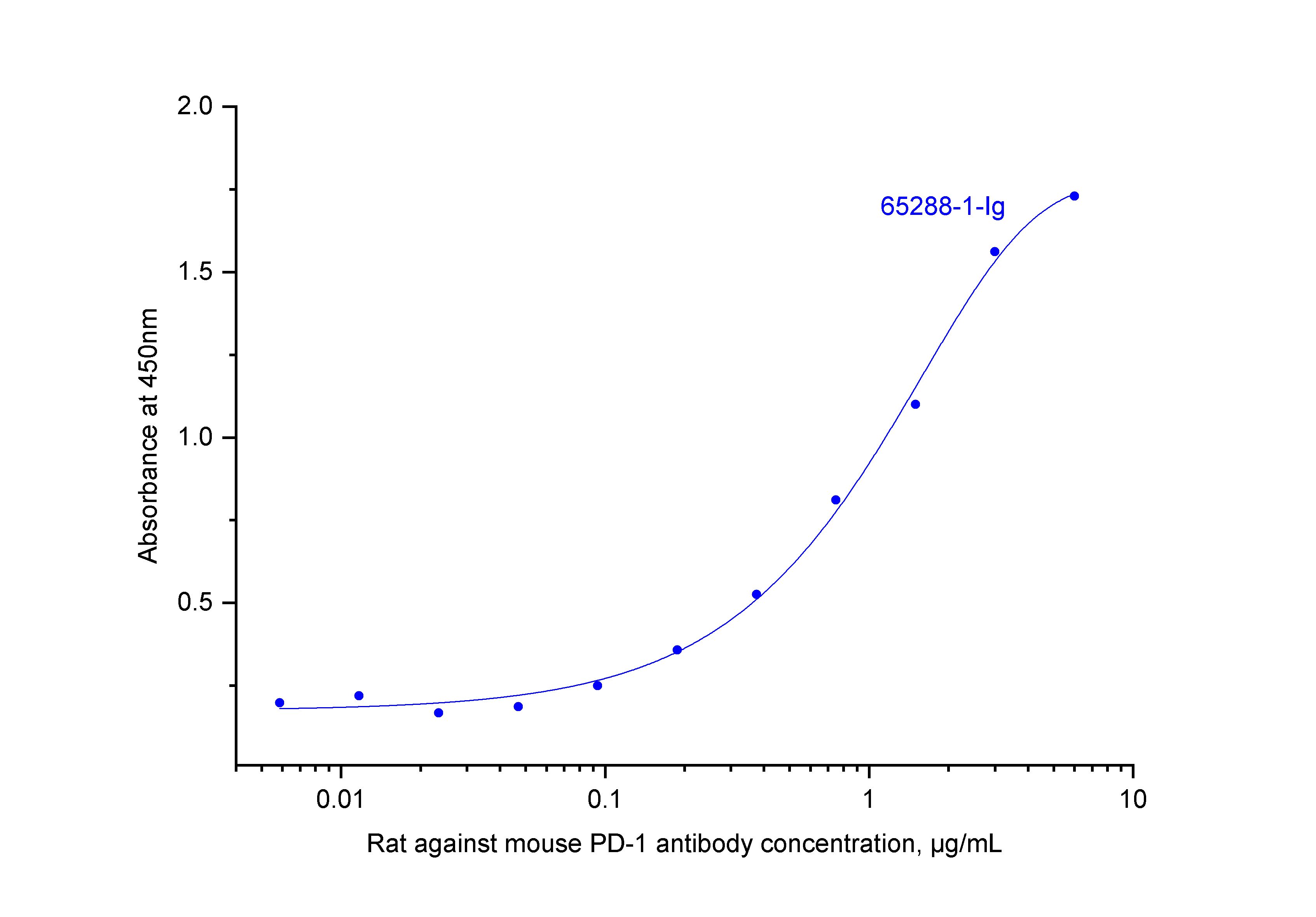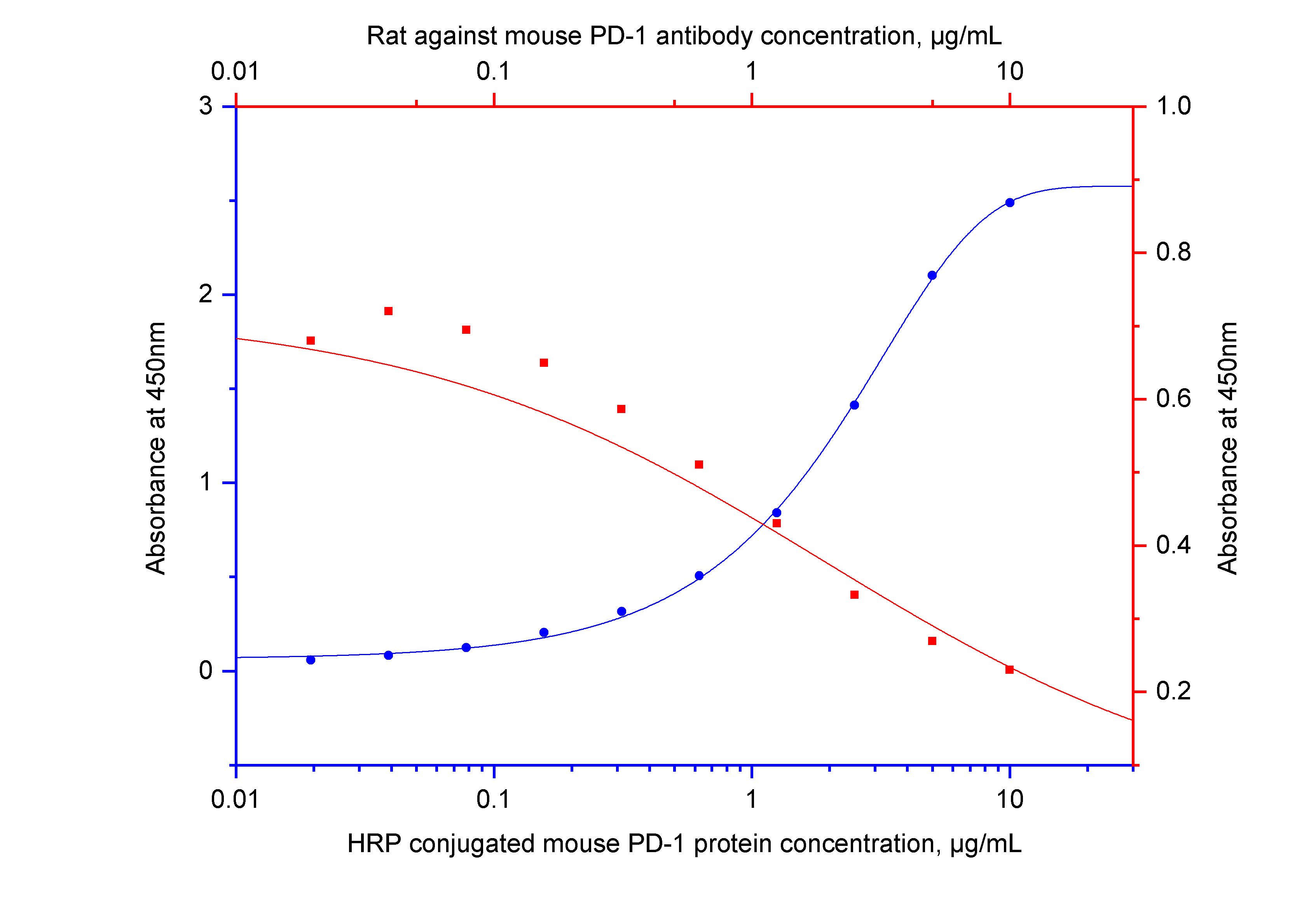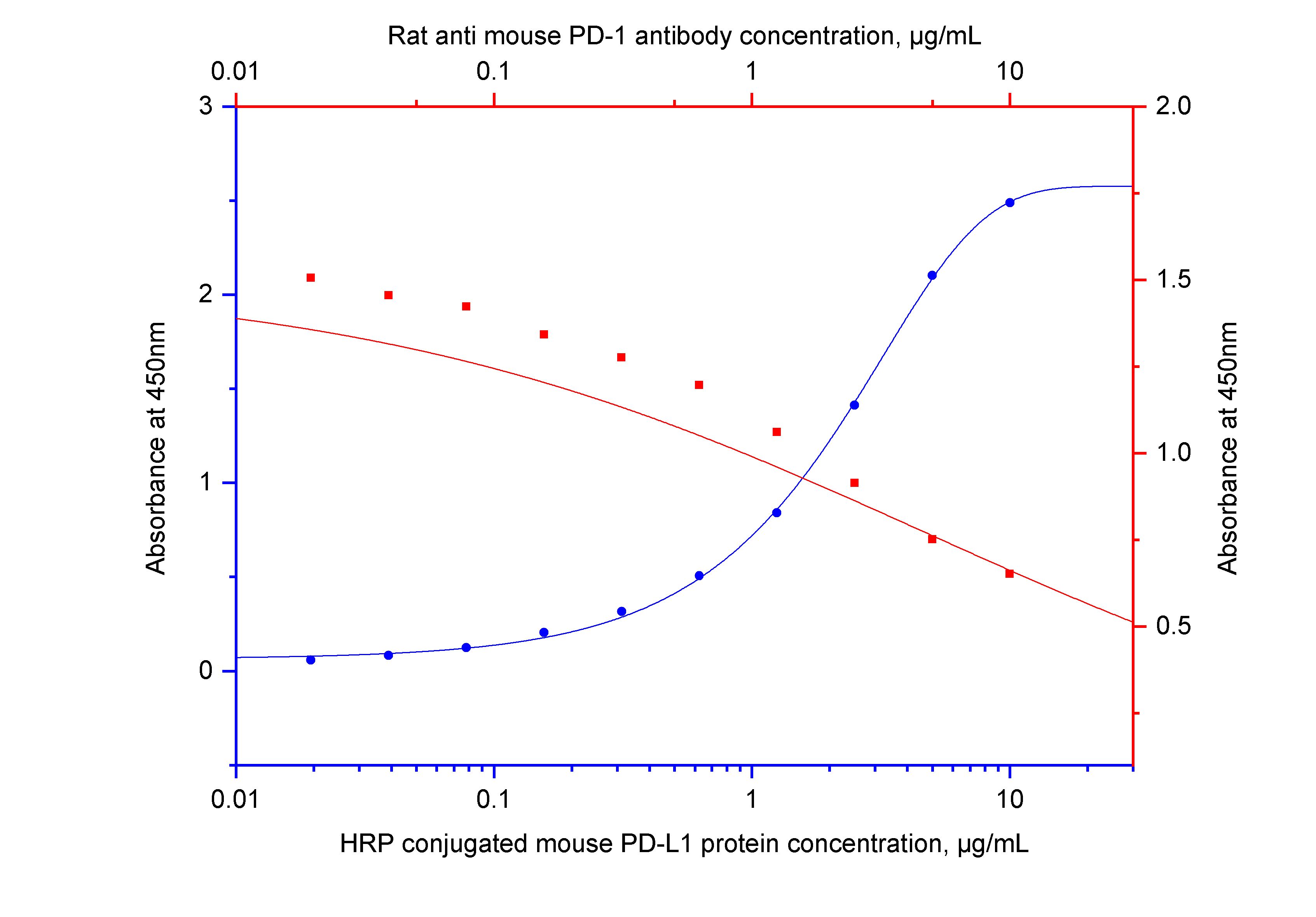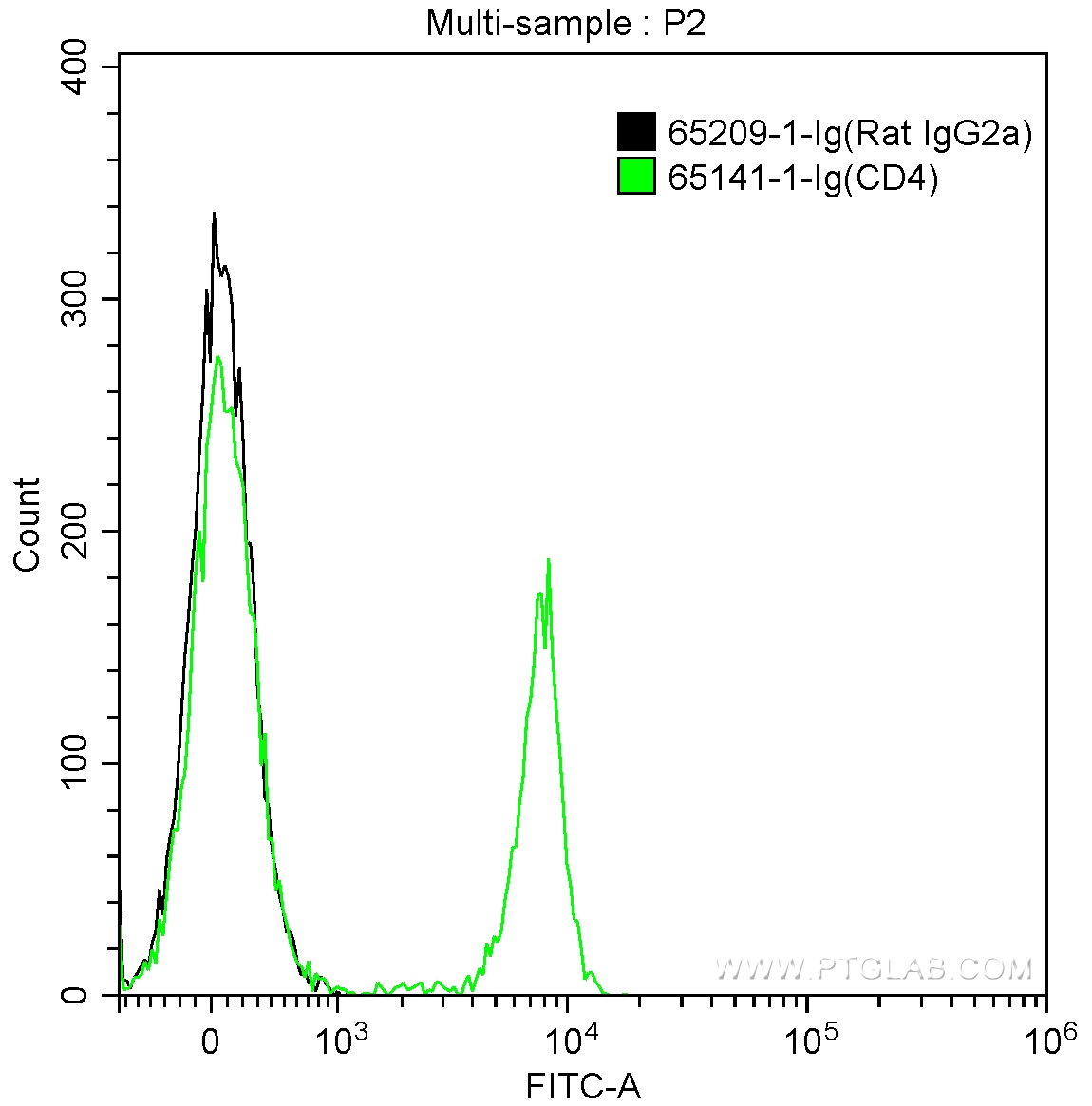Anti-Mouse CD279 (PD-1) (RMP1-14)
CD279 (PD-1) Monoclonal Antibody for ELISA, Blocking
Host / Isotype
Rat / IgG2a, kappa
Reactivity
mouse
Applications
ELISA, Blocking
Conjugate
Unconjugated
CloneNo.
RMP1-14
验证数据展示
产品信息
65288-1-Ig targets CD279 (PD-1) in ELISA, Blocking applications and shows reactivity with mouse samples.
| Tested Applications | ELISA, Blocking Application Description |
| Tested Reactivity | mouse |
| Immunogen | Mouse PD-1 transfected BHK cells 种属同源性预测 |
| Host / Isotype | Rat / IgG2a, kappa |
| Class | Monoclonal |
| Type | Antibody |
| Full Name | programmed cell death 1 |
| Synonyms | Ly101, PD 1, Pdc1, Pdcd1, programmed cell death 1 |
| GenBank Accession Number | BC119179 |
| Gene Symbol | PD-1 |
| Gene ID (NCBI) | 18566 |
| Conjugate | Unconjugated |
| Form | Liquid |
| Purification Method | Affinity purification |
| Storage Buffer | PBS with 0.09% sodium azide. |
| Storage Conditions | Store at 2-8°C. Stable for one year after shipment. |



